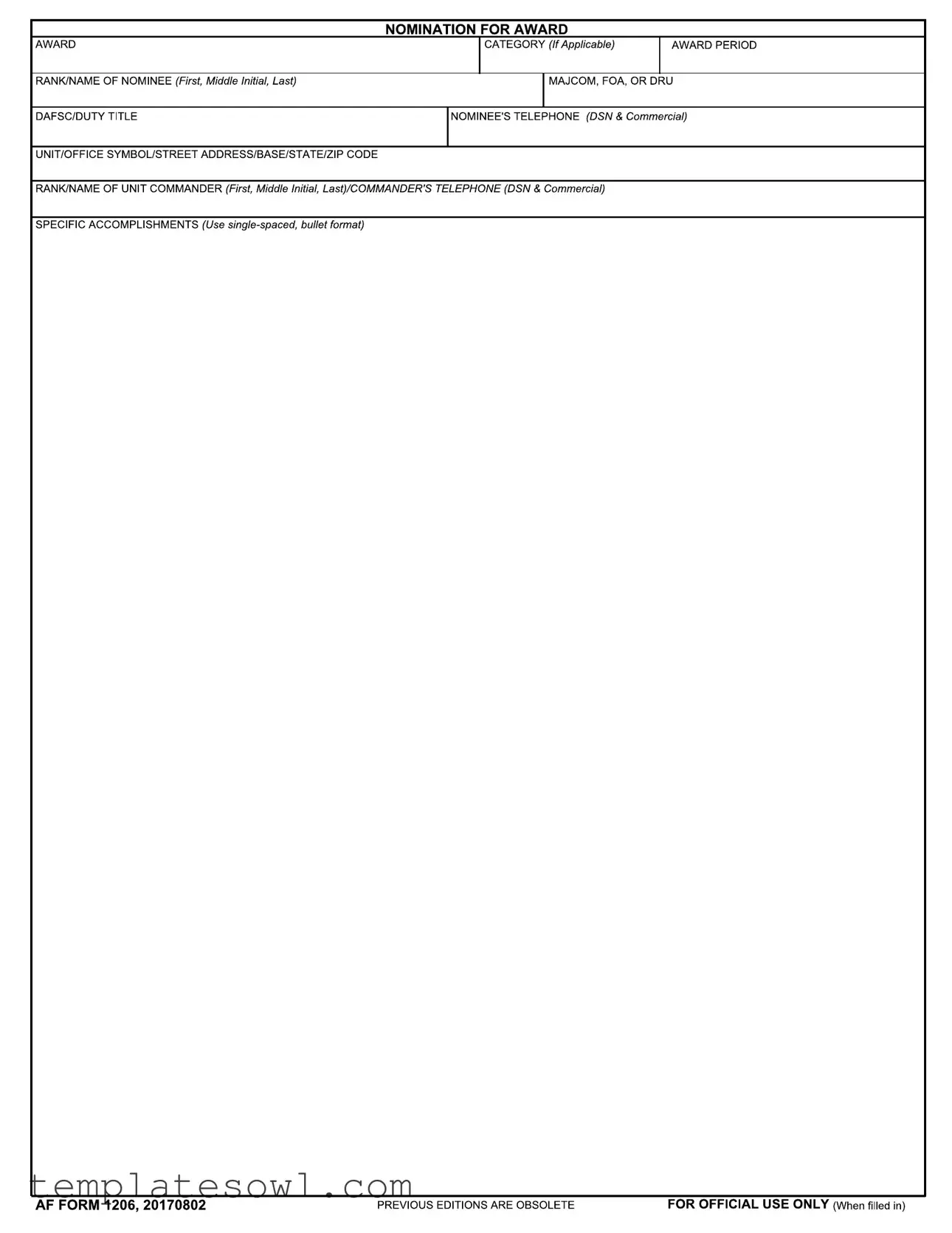The AF Form 1206 plays a crucial role in the nomination process for various awards within the U.S. Air Force. Designed to capture vital information about the nominee, this form highlights the achievements and contributions of individuals. It requires detailed input, including the nominee's rank, full name, duty title, and contact information for both the nominee and their unit commander. Categories for awards can be specified, along with the award period, allowing for a focused assessment of the nominee's accomplishments. Moreover, the form emphasizes the importance of articulating specific accomplishments in a single-spaced bullet format, which aids in presenting a clear and concise case for the nominee. The AF Form 1206 is not just a formality; it is instrumental in recognizing outstanding service within the ranks. As an official document, it reflects the values of diligence and excellence that the Air Force promotes among its members, ensuring that deserving individuals receive the recognition they merit.


